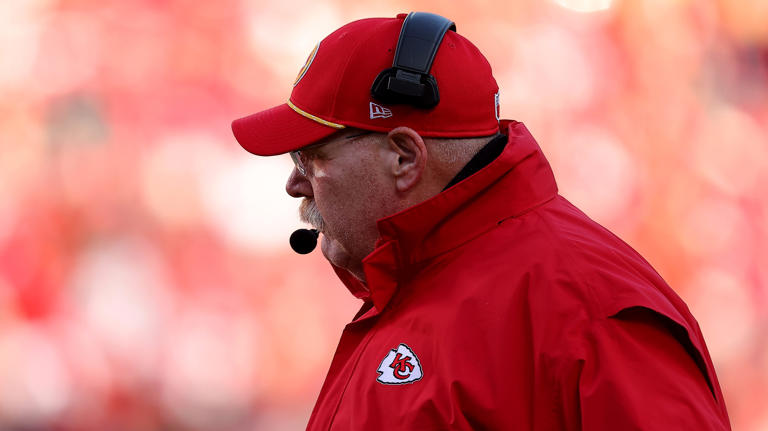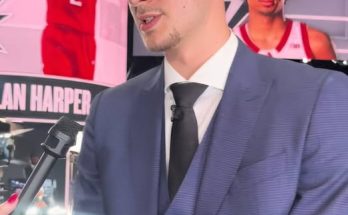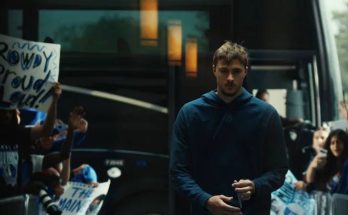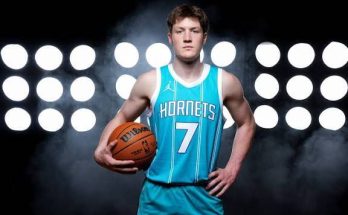The Kansas City Chiefs have quietly yet strategically bolstered their offseason roster by signing two veteran tryout players following mandatory minicamp. These signings may not grab the national spotlight like headline free-agent acquisitions, but they reflect the smart roster-building approach that Chiefs general manager Brett Veach and head coach Andy Reid have consistently utilized to sustain competitive depth and fortify position groups before training camp.
The two newest additions are tight end Geor’Quarius Spivey and center Joey Lombard. Both players earned invitations to minicamp on a tryout basis, participated in early practices, and performed well enough to convince the coaching staff to bring them onboard for further evaluation. In doing so, the team also released two veteran offensive players—guard Tremayne Anchrum and tight end Kevin Foelsch—to clear roster spots and make room on the 90-man roster (chiefs.com).
The first of the two signees, Geor’Quarius Spivey, is a 6-foot-5, 245-pound tight end with under-the-radar potential. An undrafted free agent in 2024, he originally drew attention when the Chiefs signed him during their training camp last summer. Though he was ultimately waived during final roster cuts, he found playing time in the short-lived UFL spring league with the Houston Roughnecks .
Spivey’s college career spanned two programs—Mississippi State and TCU—ending in modest production: his career stats include 28 receptions for 298 yards and one touchdown over four seasons (kckingdom.com). He also missed all of 2023 due to NCAA transfer rules, leaving limited tape for scouts to evaluate (kckingdom.com). Despite the sparse statistics, his physical profile and recent UFL seasoning suggested upside—a blend of raw athleticism and developmental promise.
While with the Roughnecks, Spivey recorded seven receptions for 65 yards in nine games, earning four starts (atozsports.com, kckingdom.com). Though not eye-popping numbers, the fact that he gained live-game experience against professional defenders was notable. It provided fresh film for the Chiefs to scrutinize during minicamp, and evidently, the coaching staff saw enough to extend him a formal contract .
Analysts point out that Kansas City’s tight end room is deep and competitive, anchored by Travis Kelce and supported by Noah Gray, Robert Tonyan, and the rookie Jake Briningstool (heavy.com). Nevertheless, depth is a priority, especially considering Kelce’s age-35 season and his potential declining workload. Spivey will need to prove he can offer special teams value or versatile tight end skills to carve out a spot, but he’s now earned an opportunity to compete.
The second veteran addition is Joey Lombard, a veteran center from the University of South Dakota. He was a staple of the Coyotes’ offensive line, starting 48 games and earning All-America honors in 2024 (chiefs.com). Lombard had previously participated in Kansas City’s rookie minicamp back in May as one of around 60 tryout participants and had also tried out with the Saints (nbcsports.com).
His strong performance at the rookie camp earned him another look at mandatory minicamp, where he again impressed the coaches (yardbarker.com). The Chiefs management likes his positional versatility—he played both center and left guard at South Dakota—and his durability, shown by his consistency in starting. He also received collegiate recognition as a Second‑Team All-American in 2024, highlighting his high level of play (yardbarker.com).
Kansas City has had questions on their interior offensive line, especially after losing Joe Thuney in free agency (yardbarker.com). Lombard brings competition behind starter Creed Humphrey and could push for a practice-squad or reserve role alongside young linemen like Kingsley Suamataia, Hunter Nourzad, and Mike Caliendo (yardbarker.com).
To make room for Spivey and Lombard, the Chiefs cut guard Tremayne Anchrum and waived tight end Kevin Foelsch, both of whom were veteran offensive players who hadn’t appeared in a regular-season game for Kansas City (kckingdom.com).
Anchrum, a 2020 seventh-round pick of the Rams and Super Bowl ring winner, had been on offseason rosters with Seattle, New Orleans, and Houston, but failed to earn a spot with the Chiefs during minicamp (heavy.com). Foelsch, an undrafted rookie who spent 2024 on the Eagles’ practice squad and participated in that team’s preseason, was also let go (kckingdom.com).
These moves aren’t dramatic from a roster perspective, but they reflect the incremental adjustments GM Veach and coach Reid make to balance depth and ensure developmental progress throughout the offseason.
Signing tryout players at minicamp is a time-tested strategy the Chiefs embrace. They brought four players in this off-season—Spivey, Lombard, wide receiver Tanner Knue, and offensive tackle Ricky Lee (kckingdom.com, kckingdom.com). Two of those—Knue and Lee—did not receive contracts, while Spivey and Lombard earned theirs after standout minicamp performances .
Pete Sweeney of Arrowhead Pride noted Spivey’s inclusion in the tryout group, reinforcing that these roster weeks are active audition platforms (kckingdom.com). NBC Sports ProFootballTalk confirmed that Kansas City signed both guys following minicamp (nbcsports.com).
Through these processes, the Chiefs are letting competition be the binding force of their roster. As Sports Illustrated’s Dominic Minchella noted, with training camp scheduled to begin July 21, there’s ample time for Lombard and Spivey to earn practice-squad or even active-roster consideration (si.com).
The trajectories for each player include clear narrative arcs.
For Geor’Quarius Spivey, it’s redemption and perseverance. After missing out on NCAA eligibility in 2023 and being released before the 2024 Chiefs season, he found new life in the UFL and reconnected with Kansas City. Now, having earned another shot, he returns hungry and with professional experience (kckingdom.com).
For Joey Lombard, it’s about perseverance and visibility. Though he went undrafted and didn’t latch on during rookie camp with Kansas City or the Saints, he earned another opportunity and made the most of it. The Chiefs’ senior team reporter, Matt McMullen, confirms that both tryout signings will be evaluated into training camp, where Lombard’s athleticism and versatility will be essential (chiefs.com).
The path ahead is clear: both players now transition to training camp, where their careers will hinge on adaptability, special teams value, and reliable in-practice performance. For Spivey, the goal is to show he can function as a blocking or receiving tight end and contribute on special teams. For Lombard, he’ll need to demonstrate functional strength and football IQ to fit into an offensive line system that prizes technique and communication.
Strategically, these moves align with Kansas City’s broader philosophy. Rather than focus solely on marquee signings, the Chiefs cultivate long-term advantage via roster competition. In 2024 alone, undrafted free agents like Carson Steele—and even late-round picks and practice squad players—played meaningful roles. Continuing that trend, Spivey and Lombard now have the platform to stake their own claims.
Notably, the team’s decision to retain seven tight ends in camp—Kelce, Gray, Tonyan, Spivey, Briningstool, Jeremy Ruckert, and Tre Watson—puts added emphasis on earning special teams reps (heavy.com). It’s a demanding environment, but in such settings, underdog performers sometimes emerge as hidden gems.
At a broader level, bringing in developmental players at minicamp gives the Chiefs flexibility. If Spivey or Lombard thrive early, the team can either carry four tight ends or five interior linemen into camp, knowing their backup depth is viable. If they don’t, Kansas City can release them and turn to free agent or training camp options without disrupting the offseason momentum.
Their move to cut Anchrum and Foelsch further illustrates roster elasticity. Anchrum was signed May 16; Foelsch was signed June 11; both were waived by June 20—suggestive of a front office with little attachment to status and full throttle toward optimization (heavy.com).
What comes next for Spivey and Lombard?
Spivey’s timeline starts immediately in special teams drills and 11-on-11 practices. He’ll need to show blocking competence, run after catch capability, and overall football acumen. If he can carve out a niche on ST units or produce in scrimmages, he’ll stand a good chance to earn a spot on the 53-man or the practice squad.
Lombard, meanwhile, must prove positional reliability. With Creed Humphrey entrenched at center, Lombard’s value will hinge on his ability to rotate in without disrupting line continuity. He may also compete for the bench roles behind guard or cross-train into other line spots, providing rotational flexibility.
Both will be evaluated through the lens of training camp intensity, preseason repetitions, and a readiness to contribute from day one on special teams or situational packages.
These additions are modest but deliberate steps in the same direction that has kept Kansas City fielding championship-caliber rosters. Under Reid and Veach, the team has consistently leveraged tryout phases—particularly rookie camps and early offseason periods—as proving grounds. The result: continued high-level depth, few roster surprises, and an ability to unearth under-valued talent.
The Chiefs’ offseason mantra has emphasized both proven stars and developmental competition. While Travis Kelce’s return at age 35—recently confirmed by Kansas City sources—still anchors their offense , the franchise is looking beyond his twilight years. Spivey represents a candidate in line to be Kelce’s next-generation position competitor. Lombard strengthens a traditionally important interior line group, with guard/center depth being a key focus after 2024 .
In the grand scheme, the Chiefs’ roster is shaping up not just around stars like Kelce or Mahomes, but also rugged, unheralded players fighting for a chance. The signings of Spivey and Lombard are reminders that Kansas City’s approach is as detail-oriented as it gets: every roster spot matters, every camp rep matters, and every tryout offers potential.
As training camp approaches—scheduled to begin July 21—the next phase of evaluation begins. If Spivey shows he can blend athletic blocking with instincts and teamwork, and if Lombard proves physically ready and mentally sharp on the line, both could find themselves on a 53-man roster in September or a conduit to the practice squad.
Either way, it’s a continuation of smart football architecture: building depth, fanning competition, and letting meritocracy prevail. And beneath the glitz of NFL headlines, that’s often what builds yearly contenders.
That is the narrative now set in motion for Spivey and Lombard. Two undrafted, determined players who seized their chance at minicamp and earned real opportunities. The next few months will show if their offseason momentum can translate into meaningful roles—and if Kansas City’s time-tested process finds yet another late-blooming contributor.



